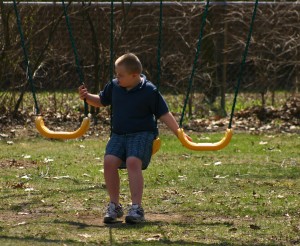Positive Behavior Support and Mental Health: Maple Farm, Maria
Maple Farm is a small community of about 5,000 people. Maple Farm residents and the surrounding communities received brochures in the mail with information about mental wellness. A group of mental health practitioners in the community developed the materials. Additionally, the group facilitated community meetings to provide information about mental wellness. They discussed risk factors for mental health challenges, early warning signs, and resources available. The local school district, hospital and clinic system supported the campaign by providing additional information. They allowed the mental health practitioners to answer questions at conferences. They provided information for the hospitals and clinics to use at well-check ups. The elementary, middle and high schools have incorporated a mental wellness curriculum with a focus on emotional and mental health for children and adolescents. This has been integrated into health education classes.

The Maple Farm Middle School staff identified three students who show warning signs for mental health challenges. These students are often alone during lunchtime and passing periods. These three students are new to the school and the community. Most of the other students have known each other for a very long time.
Two of the students’ families have recently been separated by divorce. One students, Maria, experienced a significant loss last year when her younger brother was killed in a car accident. Her family moved to Maple Farm to be close to extended family. The school staff created a skills and support group for these three students. They have weekly meetings. They learn about life transitions, emotions, and strategies for communicating their feelings. Additionally, the students’ family members attend one session per month. They participate in activities and communicate in-person with the teachers. Parents and students learn skills together for communicating their emotions. Parents learn active listening skills. School staff monitor the three students’ behavior and performance in school. They check-in with their home room teachers regarding the social connections the are making.
Maria, a student who attends the skills group, has demonstrated increasing challenges. Her attendance at school declined. She fails to submit assignments on a weekly basis. She quit the Cross-Country team, which she had only recently joined. Her teacher emailed and called Maria’s parents to see if they noticed any changes at home. Maria has been very quiet and uninterested in being with her friends or family. In addition, she has had several outbursts directed at her older sister. The school counselor and assistant principal call a meeting with Maria and her parents. Maria’s pediatrician also attends the meeting.
At the meeting, with the parent’s permission, Maria’s pediatrician reveals that she was recently diagnosed with clinical depression. She was referred to a psychiatrist for evaluation and medication. At the meeting, Maria agrees to meet with the school counselor three times a week. The assistant principal contacts Maria’s teachers. They will allow her to request a break when she is feeling overwhelmed during her academic work in class. They contact Maria’s cross-country coach so that she can request breaks at team events. Maria will check in with the assistant principal at the beginning of every day. They will checkout at the end of the school day to talk about her academic progress and emotional well being. Maria’s teacher and coaches now prompt her at the beginning of each activity to ask for a break if she needs one. Finally, Maria’s parents agreed to keep the school informed about any medication changes and any other therapy where Maria participates. They take a team approach to support Maria’s well-being.

